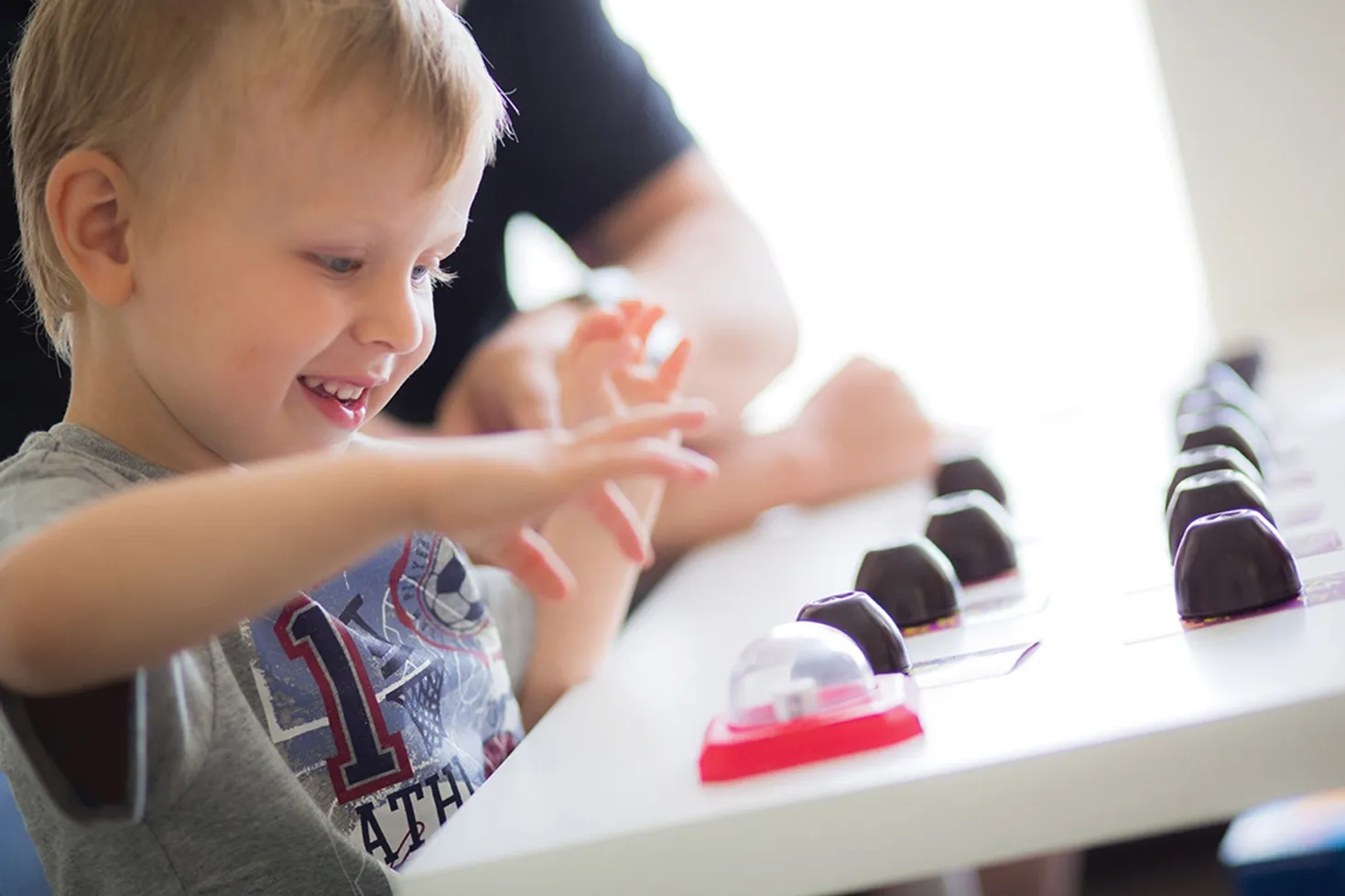From buttoning a shirt to holding a pencil, these intricate movements involve the coordination of small muscles in the hands and fingers. In this exploration from a pediatric occupational perspective, we embark on a journey to understand the milestones of fine motor skills development, unveil engaging activities to nurture these skills and shed light on the paramount importance of fine motor skills in daily activities.
Understanding Fine Motor Skills Development
Fine motor skills encompass the coordination of small muscles in the hands and fingers, enabling children to perform precise movements. This development is a crucial component of overall motor skill proficiency and plays a fundamental role in the acquisition of self-help skills, academic success, and independence. As children grow, they progress through distinct milestones in fine motor skills development:
Infancy (0-12 months):
- Grasping Reflex: At birth, infants exhibit a primitive reflex that allows them to grasp objects placed in their palms.
- Voluntary Hand Movements: By 3 months, infants start to make purposeful hand movements, reaching for objects and exploring their surroundings.
- Palmar Grasp: Around 6 months, the palmar grasp emerges, where infants grasp objects with their entire palm.
Toddlerhood (1-3 years):
- Pincer Grasp: The pincer grasp, involving the coordination of the thumb and forefinger, develops around 9-12 months. This refined grasp allows children to pick up small objects.
- Building with Blocks: Toddlers begin to stack blocks, enhancing hand-eye coordination and precision in finger movements.
- Scribbling: Around 2 years, toddlers engage in scribbling with crayons, marking the beginning of controlled hand movements.
Preschool Years (3-5 years):
- Cutting with Scissors: Mastering the skill of cutting with scissors emerges between 3 and 4 years, refining hand strength and coordination.
- Drawing Shapes and Simple Figures: Preschoolers progress to drawing basic shapes and figures, honing fine motor control.
- Buttoning and Zipping: By 5 years, many children can button and zip their own clothing, showcasing increased dexterity.
School-Age Children (6-12 years):
- Writing and Cursive: As children enter school, the focus shifts to writing.
- Keyboarding: In the digital age, proficiency in keyboarding becomes a relevant fine motor skill for academic and daily activities.
- Fine Motor Precision: Precise fine motor skills, such as threading beads, tying shoelaces, and handling small objects, continue to develop and refine.
Adolescents (13-18 years):
- Advanced Fine Motor Skills: Adolescents further refine fine motor skills for complex tasks, such as intricate artwork, musical instrument proficiency, and hands-on projects.
- Career-Specific Skills: Fine motor skills become integral to career-specific tasks, whether in healthcare, technology, or any field that demands precision and dexterity.
Activities for Fine Motor Skills Development
Engaging and purposeful activities play a pivotal role in nurturing fine motor skills across different age groups. These activities not only enhance physical coordination but also promote cognitive and social-emotional development. Let’s explore age-appropriate activities tailored to various stages of fine motor skills development:
Infancy (0-12 months):
- High-Contrast Toys: Presenting infants with high-contrast toys encourages visual tracking and reaching movements, fostering early hand-eye coordination.
- Soft Texture Exploration: Offer soft-textured objects for tactile exploration, promoting sensory development and early grasping.
- Baby Gyms: Baby gyms with hanging toys encourage reaching, batting, and grasping, contributing to the development of voluntary hand movements.
Toddlerhood (1-3 years):
- Playdough Play: Playdough provides a malleable medium for squeezing, rolling, and shaping, enhancing hand strength and finger control.
- Stringing Beads: Stringing large beads promotes the pincer grasp and hand-eye coordination, preparing toddlers for more intricate tasks.
- Building with Blocks: Constructing towers with blocks refines fine motor control and spatial awareness.
Preschool Years (3-5 years):
- Scissor Cutting: Introduce child-safe scissors for cutting practice, starting with straight lines and progressing to more complex shapes.
- Lacing Cards: Lacing cards encourage precise hand movements and eye-hand coordination, preparing children for more intricate activities.
- Threading Pasta: Threading cooked pasta onto string enhances the pincer grasp and promotes fine motor precision.
School-Age Children (6-12 years):
- Keyboarding Games: Engage children in interactive keyboarding games to develop finger strength and speed.
- Drawing and Coloring: ncourage detailed drawing and coloring activities to refine fine motor skills and creativity.
- Origami: Folding paper into intricate origami shapes challenges fine motor control and fosters patience.
Adolescents (13-18 years):
- Instrumental Practice: Playing musical instruments requires advanced fine motor skills and hand-eye coordination.
- Model Building: Engaging in model building or crafting complex structures hones fine motor precision and attention to detail.
- Cooking and Culinary Skills: Teens can develop fine motor skills through cooking activities, including chopping, stirring, and decorating.
Importance of Fine Motor Skills in Daily Activities
The acquisition and refinement of fine motor skills are not merely developmental milestones but prerequisites for success in various aspects of daily life. The importance of fine motor skills extends across several domains:
- Academic Success: Proficient fine motor skills are vital for success in academic tasks such as writing, drawing, and using technological devices.
- Self-Help Skills: Fine motor skills enable children to master self-help tasks, including dressing, feeding, and personal hygiene.
- Social Interaction: Engaging in fine motor activities, such as playing board games or sports, fosters social interaction and teamwork.
- Independence: Independent living skills, from preparing meals to managing personal belongings, heavily rely on well-developed fine motor skills.
- Creative Expression: Fine motor skills are integral to creative endeavors, allowing individuals to express themselves through art, music, and other forms of self-expression.
- Career Proficiency: In adulthood, careers often require specific fine motor skills, whether in surgery, technology, arts, or other fields demanding precision and coordination.
Conclusion
Fine motor skills development is a multifaceted journey that evolves from the early days of infancy to the complexities of adolescence. By understanding the milestones, engaging in purposeful activities, and recognizing the profound impact of fine motor skills on
For more information, if you have questions or would like to schedule, please contact one of our offices


